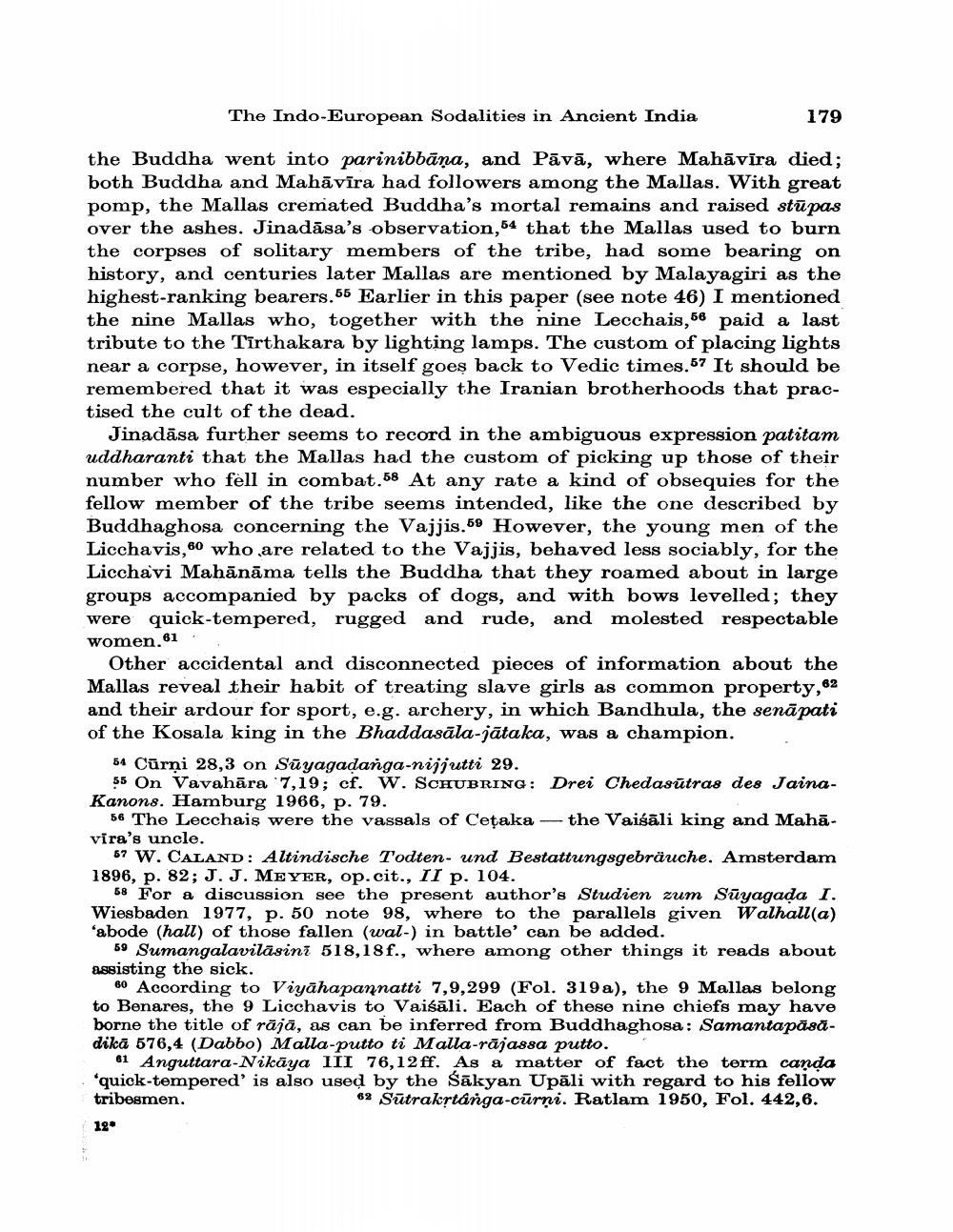________________
The Indo-European Sodalities in Ancient India
179
the Buddha went into parinibbāņa, and Pāvā, where Mahāvīra died; both Buddha and Mahāvīra had followers among the Mallas. With great pomp, the Mallas cremated Buddha's mortal remains and raised stūpas over the ashes. Jinadāsa's observation, 54 that the Mallas used to burn the corpses of solitary members of the tribe, had some bearing on history, and centuries later Mallas are mentioned by Malayagiri as the highest-ranking bearers.55 Earlier in this paper (see note 46) I mentioned the nine Mallas who, together with the nine Lecchais,56 paid a last tribute to the Tirthakara by lighting lamps. The custom of placing lights near a corpse, however, in itself goes back to Vedic times.57 It should be remembered that it was especially the Iranian brotherhoods that practised the cult of the dead.
Jinadāsa further seems to record in the ambiguous expression patitam uddharanti that the Mallas had the custom of picking up those of their number who fell in combat.58 At any rate a kind of obsequies for the fellow member of the tribe seems intended, like the one described by Buddhaghosa concerning the Vajjis.59 However, the young men of the Licchavis,60 who are related to the Vajjis, behaved less sociably, for the Licchavi Mahānāma tells the Buddha that they roamed about in large groups accompanied by packs of dogs, and with bows levelled; they were quick-tempered, rugged and rude, and molested respectable women. 61
Other accidental and disconnected pieces of information about the Mallas reveal their habit of treating slave girls as common property, 62 and their ardour for sport, e.g. archery, in which Bandhula, the senā pati of the Kosala king in the Bhaddasāla-jātaka, was a champion.
54 Cūrņi 28,3 on Sūyagadanga-nijjutti 29.
55 On Vavahāra 7,19; cf. W. SCHUBRING: Drei Chedasūtras des JainaKanons. Hamburg 1966, p. 79.
56 The Lecchais were the vassals of Cetaka — the Vaiśāli king and Mahāvira's uncle.
67 W. CALAND: Altindische Todten- und Bestattungsgebräuche. Amsterdam 1896, p. 82; J. J. MEYER, op.cit., II p. 104.
58 For a discussion see the present author's Studien zum Sūyagada I. Wiesbaden 1977, p. 50 note 98, where to the parallels given Walhall(a) "abode (hall) of those fallen (wal.) in battle' can be added.
69 Sumangalavilasini 518,18f., where among other things it reads about assisting the sick.
80 According to Viyāhapannatti 7,9,299 (Fol. 319 a), the 9 Mallas belong to Benares, the 9 Licchavis to Vaiśāli. Each of these nine chiefs may have borne the title of räjä, as can be inferred from Buddhaghosa: Samantapäsädikā 576,4 (Dabbo) Malla-putto ti Malla-rājassa putto.
61 Anguttara-Nikāya III 76,12 ff. As a matter of fact the term canda 'quick-tempered' is also used by the Sākyan Upāli with regard to his fellow tribesmen.
62 Sūtrakrtânga-cūrni. Ratlam 1950, Fol. 442,6. 19




